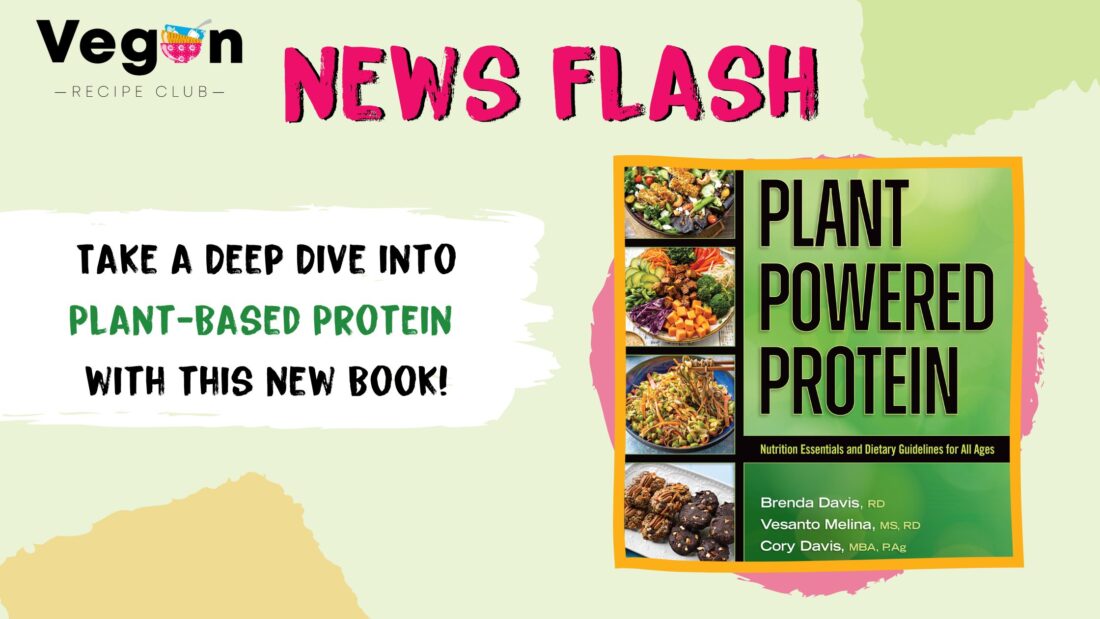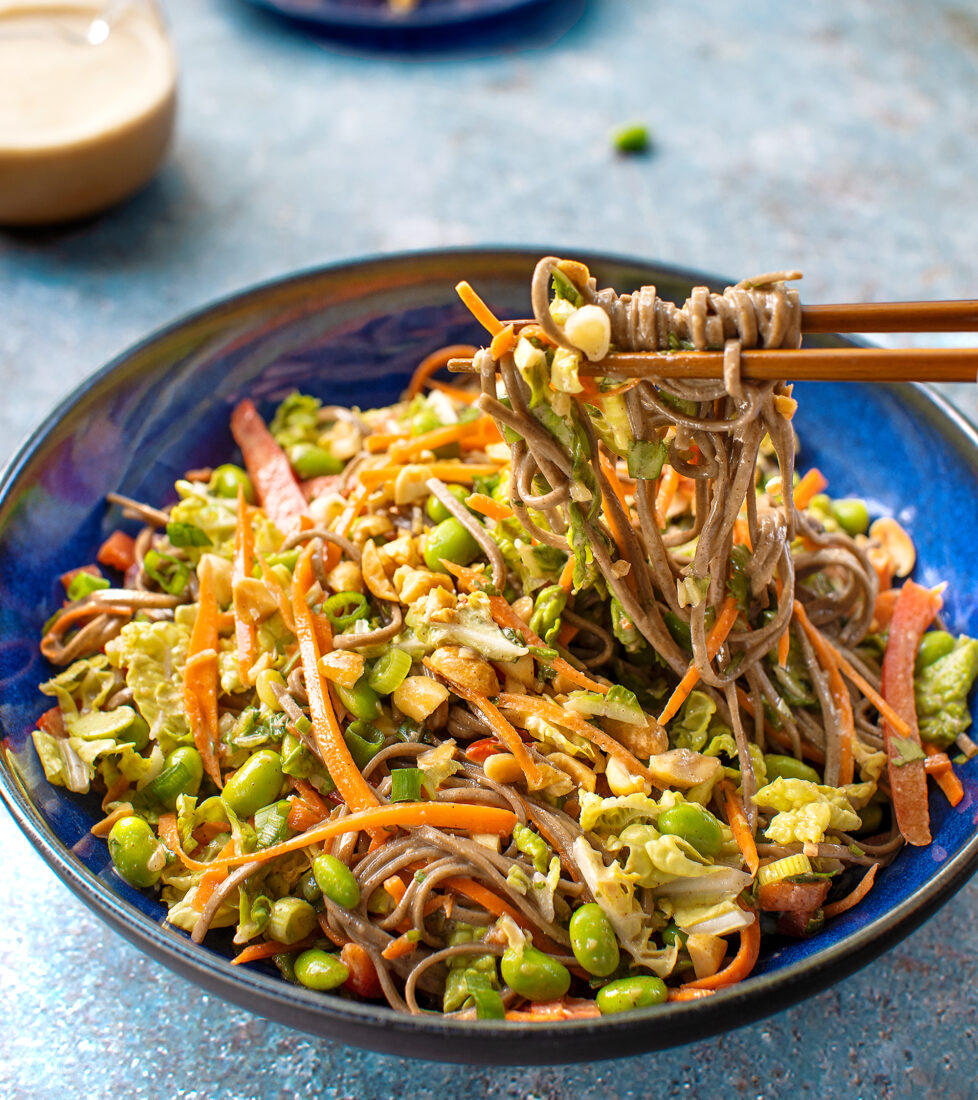Take a Deep Dive into Plant-Based Protein with this new Book!

In their latest release, PLANT-POWERED PROTEIN: Nutrition Essentials and Dietary Guidelines for all Ages, Canadian plant-based nutrition experts Brenda Davis, RD, and Vesanto Melina, MS, RD, together with Cory Davis, answer the top question for many people considering a plant-based diet: Will I get enough protein?
The exciting answer is a resounding YES.
The authors provide scientific studies, tables, charts, and in-depth nutritional analyses to show that plants are an abundant source of high-quality protein and explain the roles of macronutrients and micronutrients, and how the amino acids found in protein promote healthy growth. Readers learn how to determine their recommended daily allowance (RDA) for protein per age group, and how to obtain all the vital nutrients each group requires.
Two key advantages worth noting about plant protein
It has a much lighter carbon footprint and it offers distinct health advantages. From land usage to water consumption, plant-based protein supports the environment. Plant protein contains vital compounds, such as fibre, antioxidants, and phytochemicals, that help reduce the risk of chronic diseases, and lack harmful components found in animal products, such as cholesterol, endotoxins, and saturated fats.
Menus and a daily guide to healthful eating assist with planning a nutritionally balanced diet. Thirty delicious recipes make it easy to put this essential information into practice.

Peanut-Edamame Noodle Salad
We recieved an exclusive extract of one of the recipes, a protein-packed (34g per portion!) Peanut-Edamame Noodle Salad for you to enjoy.
INGREDIENTS
Peanut Dressing
1/3 cup (85 ml) water
½ cup (125 ml) peanut butter
¼ cup (60 ml) freshly squeezed lime juice
2 tablespoons (30 ml) unseasoned rice vinegar
1½ tablespoons (22 ml) low-sodium or regular tamari or Bragg Liquid Aminos
1 tablespoon (15 ml) grated fresh ginger
2 cloves garlic, minced
1 teaspoon (5 ml) toasted sesame oil
1 teaspoon (5 ml) chili sauce, hot sauce, or sriracha sauce, or pinch cayenne
Salad
5 ounces (150 g) dry edamame noodles, soba (buckwheat) noodles, or other noodles
1½ cups (375 ml) frozen shelled edamame, peas, or green chickpeas
2 cups (500 ml) thinly sliced napa cabbage (or other greens), packed
2 carrots, shredded or grated
1 red bell pepper, thinly sliced
½ cup (125 ml) chopped fresh cilantro, parsley, or basil (or a combination)
2 green onions, thinly sliced
¼ cup (60 ml) roasted unsalted peanuts, whole or coarsely chopped
METHOD
To make the peanut dressing, put the water, peanut butter, lime juice, vinegar, tamari, ginger, garlic, sesame oil, and chili sauce in a medium bowl or jar and whisk until smooth.
To make the salad, prepare the noodles and edamame according to package directions. Strain the noodles and rinse with cold water. Drain the edamame and rinse with cold water.
Put the noodles and edamame in a large bowl. Add the napa cabbage, carrots, red bell pepper, cilantro, and green onions. Pour the dressing on top and
gently toss to combine the ingredients. Sprinkle the peanuts on top just before serving.
Availability
Plant-Powered Protein: Nutrition Essentials and Dietary Guidelines for All Ages by vailable on Amazon.co.uk from £8.14.
About the authors
Brenda Davis, RD, is one of the world’s leading plant-based pioneers and speakers. In 2022, Brenda became the first registered dietician to receive the Plantrician Project’s Luminary Award. Vesanto Melina, MS, RD, a popular speaker at health conferences worldwide, was accorded the prestigious
Ryley Jeffs Award from Dietitians of Canada. Cory Davis, MBA, PA.g, is a professional agrologist who has worked in natural resource management since 2012.

The author
This post was written by Pia Werzinger
As Viva!'s Food and Cookery Digital Media Manager, Pia is keeping you up to date on the latest recipes and vegan food news.
